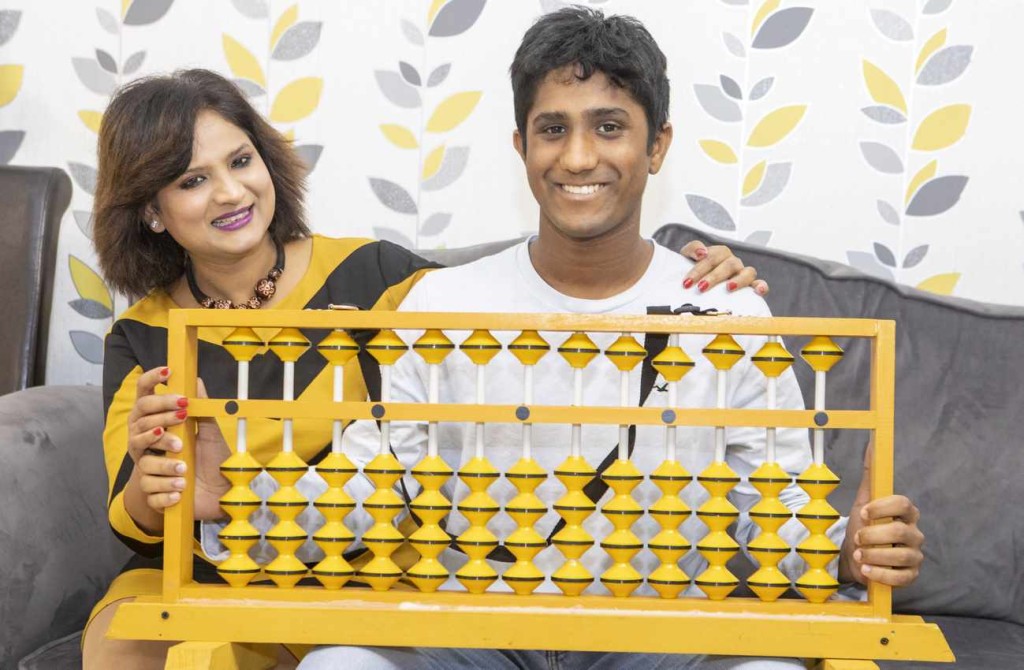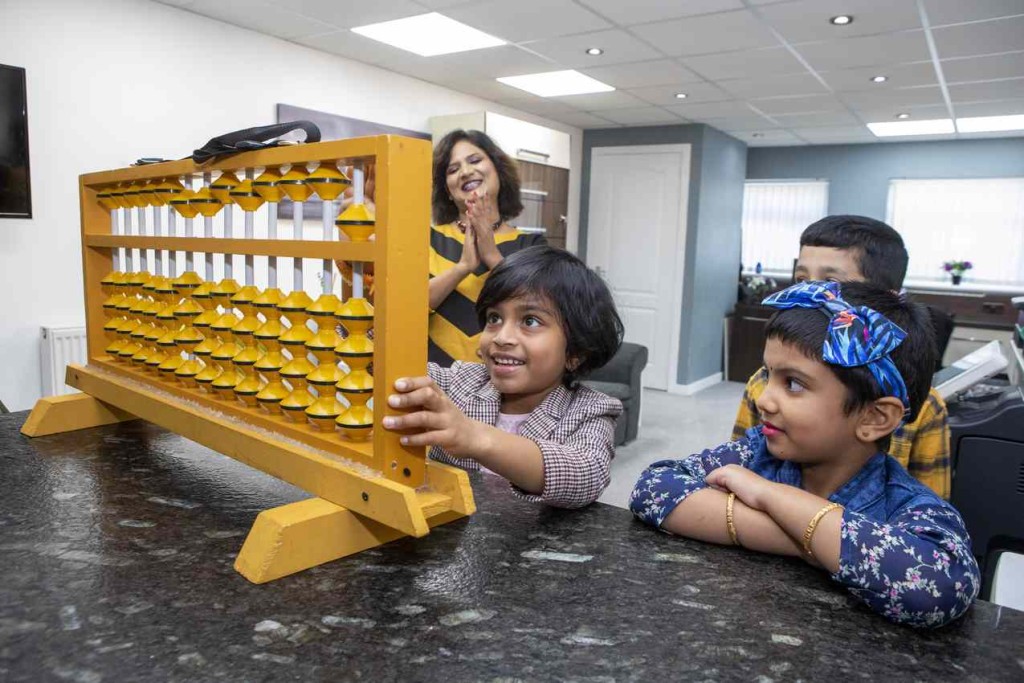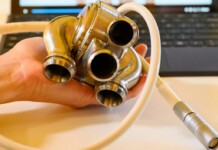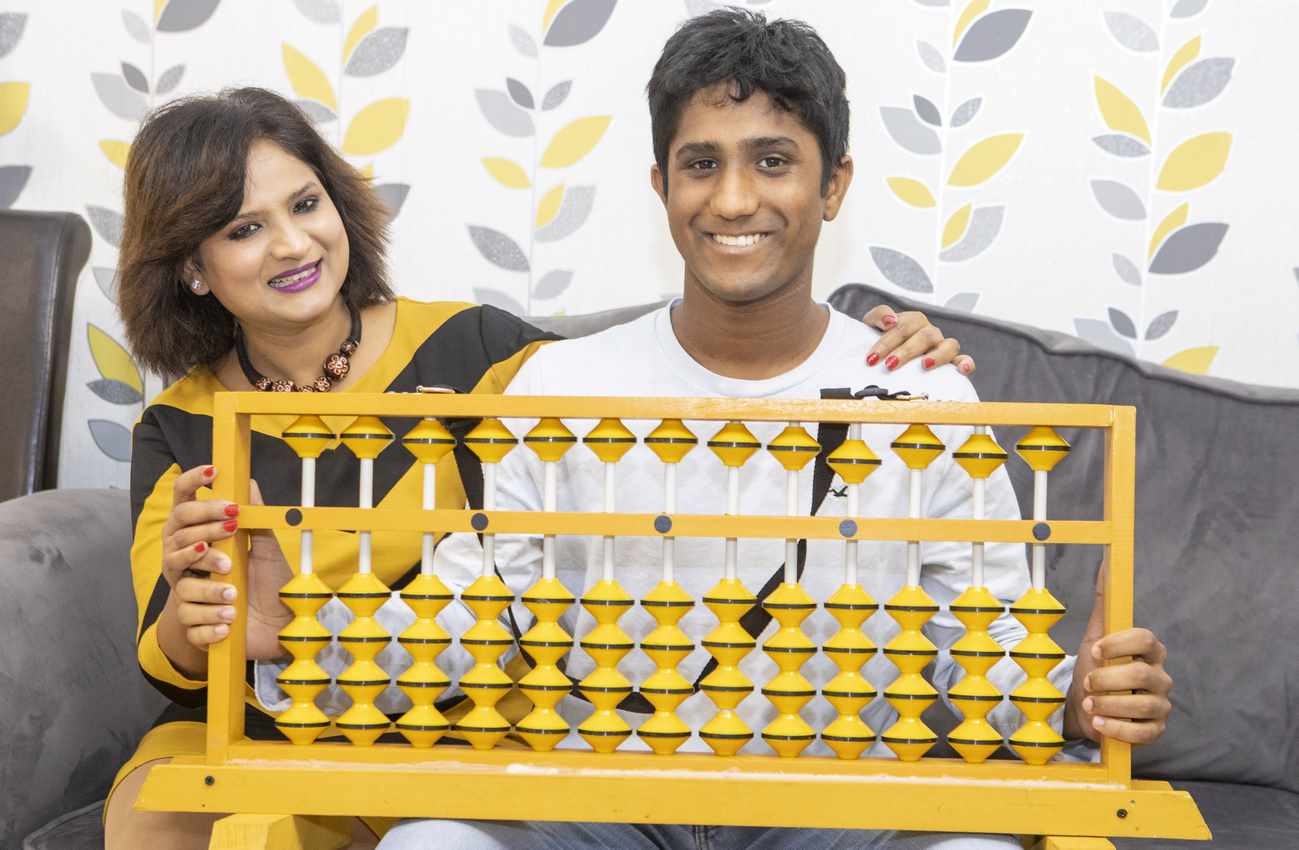
A British woman of Indian heritage thought a bit of ancient instruction might help her son tackle a modern problem.
Growing up in India, a young Dr. Rashmi Mantri used an abacus to help her visually comprehend mathematics. After noticing her son Dhruv was struggling with math, she started employing that same ancient tool to help him after school.
In just six days he started to show progress with the abacus and would go on to become a regular whizz kid with numbers, with even his classmates’ parents reaching out for help.
Dhruv has now landed an apprenticeship at international beverage firm Diageo and said he reckons his teachers would be shocked by the career choice considering his difficulties with math.
“Dhruv was in [fifth-grade] when I started to notice he was struggling with simple [arithmetic,]” said Dhruv’s mom Dr. Mantri. “I would ask him something like 35 – 13 and he couldn’t do it.”
“I never thought I would teach him using an abacus, but it was something I used as a child in India and it was always helpful. Within six days I started to notice a difference and see results.”
So dramatic was the turnaround, that school staff asked him to perform with the abacus at an assembly, where some parents even came to ask for advice on using it for their kids.
RELATED: For the First Time Ever, a Woman is Awarded the Most Prestigious Mathematics Award in the World
In 2016 Dr. Mantri launched the British Youth International College (BYITC) and is now using her abacus tutoring to teach to thousands of kids around the world.
IT specialist Dr. Mantri said the humble abacus can be used for calculations into the trillions and kids enjoy learning on it because it’s like a game.

“I decided to change the way he looked at numbers,” she said. “An abacus is a tried and tested method, the Egyptians used them for building the pyramids.”
“They become a playing tool for younger children, it feels like a game. I think the success comes because children can touch and feel an abacus and visualize them.”
By the age of 12, Dhruv was giving online cyber security seminars and is now pursuing a career in data science and analytics. During the four-year apprenticeship, he will spend one day a week studying Data Science and Artificial Intelligence at Glasgow Caledonian University.
GOOD LEARNING NEWS: Majority of Teachers and Parents Want More of This to Increase Student Engagement in Classrooms
“He is so confident now and I am so proud,” she said, with Dhruv adding “I don’t think my teachers would have guessed that I would be following a career in data science at that time.”
Hard to argue with the results, not least of which the Pyramids.
SHARE This Academic Turnaround On Social Media…





















I remember playing with an abacus in grade school, but it was too cumbersome. A calculator is easier to fit in the pocket and everyone should have one.
It’s this way of learning numbers that improves things for kids. Using a soroban or abacus can improve learning for certain type of students, like visual or kinetic learners.
PLEASE GoodNews folks, can you include the instructions for that strange (to me) kind of abacus? have been googling and googling, to no avail!
And re the comment above (abacus v calculators) – the tangible, tactile aspect of the abacus – or cuisenaire, or counter buttons or something else you can touch – is essential for most children at least for a while. A calculator may get you the right answer if you hit the right buttons, but I have seen students in remedial maths classes using calculators, maybe leaving out a number or a decimal point, having no idea why their answer is wrong or why it is right! But of course everyone shd know how to find the calculator on their phone.
A commenter of this story on our Facebook page said this is a soroban, but I can’t be sure. https://en.wikipedia.org/wiki/Soroban